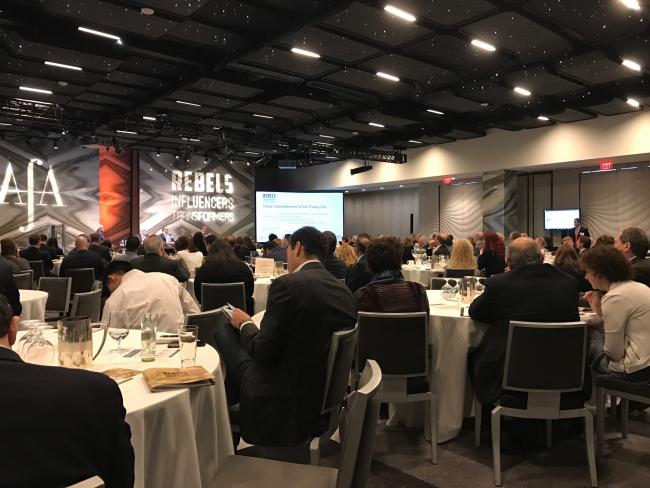Topics
Top 4 Fashion Trends to watch: Lessons from AAFA 2017

Recently, CGS attended the American Apparel & Footwear Association (AAFA) Executive Summit in Washington, DC and came away from the event with some key themes and trends. Below, we outline the top four trends we found most significant and how we think it will impact the future of retail.
- Fast Fashion’s Growth
As many retailers struggle to maintain or grow their presence in today’s retail landscape, some retailers are performing extremely well. Fast fashion brands such as Zara, H&M, and Forever 21 are releasing new products at a faster pace, with some companies churning out new styles every few weeks, or up to 52 seasons rather than the traditional four. The rise of fast fashion is fueling consumers’ expectations “see now, buy now” expectation and companies are pressured to react and to speed up their supply chains.
- The New Administration & Global Sales
A key conversation at the conference focused on the new administration and how retail companies should prepare for and react to the possibility of a border tax hike. Companies like Spanx, SG Footwear, and Komar went to Capitol Hill and discussed the potential border tax increase. The tax increases would have a significant impact given that 90% of the retail industry relies on import. We learned that the border tax could get as high as 35%, although unlikely. Many retailers are worried that the taxes will surpass their profits, however, some say that corporate taxes could also be reduced by 15%, balancing out the border increase. The bottom line: we know that border taxes will increase, but we don’t know how much or when. Some organizations are already planning for the border tax by incorporating it into their margins. If it doesn’t happen, they will be better off, but if it does, they will be covered.
- Enhancing the Customer Experience
Offering a top quality, in-store customer experience is becoming increasingly important as many retailers have begun reducing their store footprint to shift their focus into eCommerce and wholesale. Brands are getting more creative with different ways to drive and maintain foot traffic in their stores. For example, Lululemon offers yoga classes at some of their stores, which increased in-store traffic and ultimately had a positive impact on the brand’s sales. Bonobos reinvented the store experience by encouraging customers to make an appointment for a more tailored experience. Once the customer is ready to buy, the items are delivered to their home later that day.
- The Impact of Emerging Technologies
Wearables, machine learning, 3D printing, mobile, and Artificial Intelligence (AI) are all coming together and are already impacting the fashion industry. For instance, Alibaba, one of the world’s largest eCommerce companies, is using machine learning, AI, and data from mobile transactions to better match their buyers and sellers. They look at data year-over-year to see what their best sellers are and use that to fine tune their inventory. For example, during “Singles Day” in China, a shopping holiday much like “Black Friday” or “Cyber Monday” in the United States, Alibaba set a new record, with $18 Billion in sales and 175,000 orders coming in per second. Some brands are offering customization options in real-time, with machines that can print a custom sweater or t-shirt based on the design, colors and materials they selected, and walk out with a unique or tailored piece in 30 minutes or less.
Today’s retailers must remain nimble to stay ahead of some of the technological and political changes affecting the fast-paced evolution of the industry. Discussions on maximizing lead time and profitability, enhancing the customer experience and leveraging new technology to meet the new supply chain demands were key topics that were addressed during the event. Using an end-to-end solution, like CGS’s BlueCherry Enterprise Suite, can help optimize and speed up your supply chain to deliver better products, faster.

